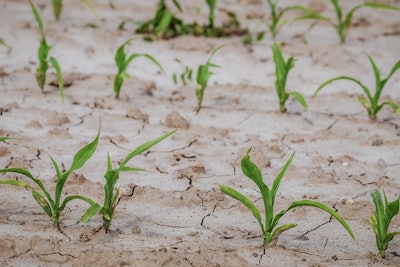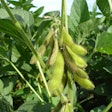
Recent weather patterns from late April through early May brought varied drought conditions across the United States, with slow-moving low-pressure systems delivering significant rainfall and improvement to some agricultural areas while other key regions experienced worsening dryness, according to the latest U.S. Drought Monitor summary. The Northeast, Mid-Atlantic, and Southern Great Plains benefited from heavy precipitation, while drought expanded or intensified in parts of the Central to Northern Great Plains and the Florida Peninsula.
Key regional drought updates include:
- Northeast: More than 2 inches of rain led to a 1-category improvement in much of the region. However, areas receiving less rainfall maintained moderate (D1) to severe (D2) drought, particularly where 28-day average streamflows remain low, such as along the Potomac River. The drought here is primarily hydrological and considered long-term.
- Southeast: Conditions were mixed. Northeastern Georgia and parts of the Carolinas saw a 1-category improvement from over 1.5 inches of rain and better soil moisture. Conversely, the Coastal Plain of South Carolina experienced a 1-category degradation. Moderate short-term drought expanded in southeastern Alabama and south Georgia due to 30- to 60-day precipitation deficits. Through May 6, drought intensified across the Florida Peninsula, with many areas in severe (D2) to extreme (D3) categories. The western Florida Panhandle saw some reduction in abnormal dryness (D0) and moderate drought (D1) from heavy rainfall.
- South: Heavy precipitation (more than 2 inches) resulted in improvements in parts of Oklahoma and Texas. According to the Oklahoma Mesonet, 10 to 16 inches of precipitation fell across central to southwestern Oklahoma in the past 30 days. A 2-category improvement was noted north of Midland, Texas. A sharp gradient from excessive wetness in much of Oklahoma to extreme and exceptional drought near the Upper and Middle Rio Grande Valley has developed.
- Midwest: The majority of the Midwest remains drought-free. However, abnormal dryness (D0) was introduced in northwestern Indiana, northern Illinois, and northwestern Missouri. D0 was discontinued in parts of Lower Michigan that received 1 to 2 inches of rain.
- High Plains: Mostly dry weather prevailed from April 29 to May 5. Extreme drought (D3) expanded in western North Dakota, coinciding with recent wildfires and dust storms. Severe drought (D2) expanded across central Nebraska, and D3 was added to parts of northeastern Nebraska due to very low soil moisture. Northeastern Wyoming and adjacent areas of western South Dakota saw a broad 1-category improvement. However, a drier-than-normal April led to a 1-category degradation in parts of southern Wyoming.
- West: Widespread, heavy precipitation led to a 1-category improvement across eastern New Mexico. Parts of Arizona also improved due to near or above-normal April precipitation. While minor improvements occurred in parts of western and southeastern Montana, abnormal dryness (D0) and moderate drought (D1) expanded across north-central Montana. No changes were made in California or Nevada as they enter a drier season. Long-term drought in the Pacific Northwest is limited to Washington's northern Cascades.
Alaska and Puerto Rico remain largely drought-free. In Hawaii, despite some rainfall, no improvements were made, with low streamflows on the Big Island and Maui, which have significant severe drought. Drought conditions vary across U.S.-affiliated Pacific Islands, with extreme drought (D3) in Saipan (Commonwealth of the Northern Mariana Islands) and Wotje (Republic of the Marshall Islands).
Looking ahead
A cut-off low-pressure system is forecast to bring widespread, heavy precipitation (more than 3 inches) to the Southeast, including southeastern Alabama, central to south Georgia, and the Florida Panhandle, through May 12. The Northeast is expected to receive another 1 to 2 inches of rain around May 9-10. Elsewhere, mostly dry weather and unseasonably warm temperatures are forecast for the Corn Belt and much of the Great Plains and West. The Pacific Northwest may see precipitation around May 12.
The Climate Prediction Center’s 6-10 day outlook (valid May 13-17) favors:
- Above-normal precipitation for the Mid-Atlantic, Florida Peninsula, Upper Mississippi Valley, Northern to Central Great Plains, and much of the West.
- Elevated below-normal precipitation probabilities for the Lower Mississippi Valley, western Gulf Coast, and Rio Grande Valley.
- Above-normal temperatures for most of the eastern and central U.S., with the largest probabilities (more than 80%) forecast for the Great Lakes.
- Below-normal temperatures throughout the West.
The U.S. Drought Monitor is jointly produced by the National Drought Mitigation Center at the University of Nebraska-Lincoln, the United States Department of Agriculture, and the National Oceanic and Atmospheric Administration. Map courtesy of NDMC. Any precipitation that occurred after 8 a.m. EDT on Tuesday, May 9, will be considered in the next U.S. Drought Monitor release.


















